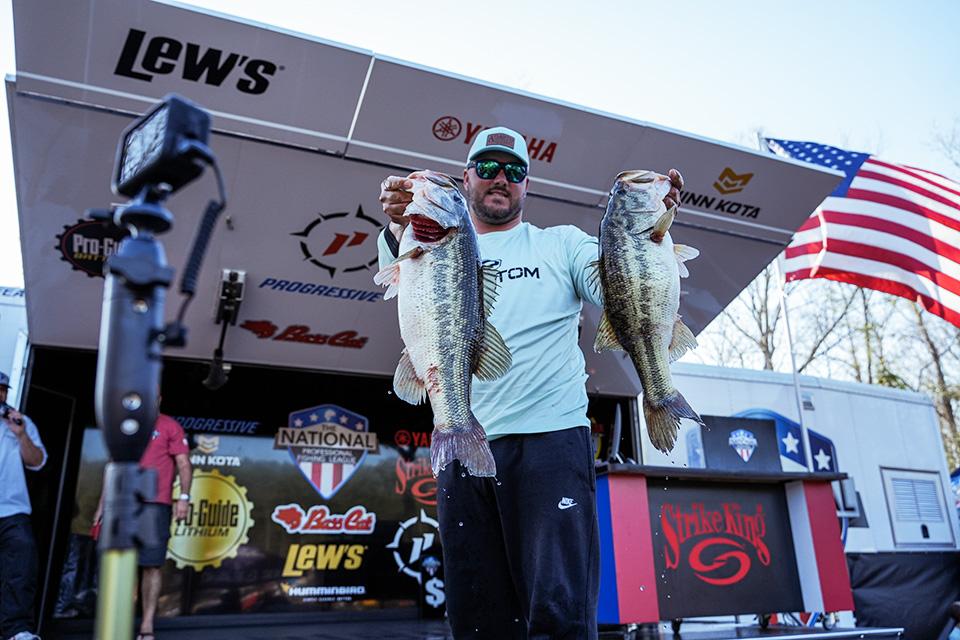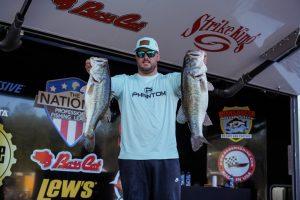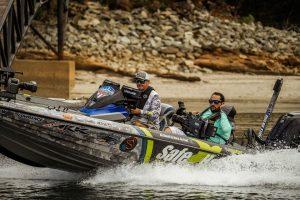Story by Corey Casey | Photos by Tanner & Travis Lyons
Topwater times two! In Part 1 of this series, we covered the aggressive, fast-moving buzzbait—a lure built for covering water and creating commotion. But what happens when the bass are buried deep in the thick stuff, where other topwater baits can’t go?
That’s where the hollow-bodied frog comes into play!
Designed to glide across grass mats, lily pads, and thick vegetation, this bait is the heavyweight champ of heavy cover. It’s weedless, versatile, and capable of triggering the most violent topwater blowups you’ll ever see.
I’m going to explain why the hollow body frog needs to be in your topwater rotation, when to throw it, how to throw it, a few easy modifications you can make and the difference between a walking frog and a popping frog.
Let’s get to frogging!
First, the hollow-bodied frog goes where other lures just can’t go. Thanks to its soft, hollow body and upturned double hooks, you can throw it into lily pads, matted grass, duck weed, and other types of thick bank cover and reeds and stay snag free. And a hollow-bodied frog is extremely versatile. You can walk it with a walking style frog or pop it with a popping frog. You can work it super slow in thick cover or quick and steady in open water over scattered grass. They work well around docks or under trees. The options are unlimited.
Second, this is a big fish bait. It’s built for big bass and creates extremely exciting blow-ups. It’s durable and long lasting. You could catch dozens of fish on a single frog.
I like to throw a hollow-bodied frog during the post spawn and throughout the summer, especially when bass are hanging shallow in the shade or buried in thick grass. It’s one of my go-to baits when I’m fishing around bream beds, after a rainstorm, or anytime bass seem hesitant to chase a fast-moving lure. The frog gives me a slow, natural presentation that other style baits just can’t match.
There are two styles of hollow-bodied frogs: the walking frog and the popping frog. The walking frog has a slim, pointed nose and is designed to “walk the dog”—a zigzag motion across the surface. It imitates fleeing baitfish and is great in open pockets or sparse cover. It is also the more subtle of the two styles and can be deadly when bass are pressured or hesitant.
A popping frog has a cupped mouth that spits water with each twitch like a traditional popper. It’s a little better with a ripple on the water and when the fish are being aggressive because the popping frog creates a little more commotion than the walking version. It’s my go-to when I’m fishing target-specific spots like under docks or cypress trees because I can pop it once, stop it and let it sit in the strike zone.
You fish both style frogs with a similar short twitch of your rod, varying your twitch speed to match the action you’re looking for. Use short, steady twitches for the walking frog and short pop and stop twitches for the popping frog. You can alter the action of each style with a really quick modification by trimming the skirted legs. The shorter the length of the legs, the more side to side action the frog will have. You can help yourself with the hookup ratio by bending the hooks slightly up and out.
Throwing a hollow-bodied frog is all about power and control. You need the right gear to get a solid hookset and pull the bass out of heavy cover. I use a 7- to 7 1/2-foot heavy action rod with an 8:1 gear ratio reel spooled with 40- to 65-pound braided line. Braid is a must because it has no stretch and is extremely tough to ensure you get a great hookset.
If you’re interested in learning more about fishing or just going fishing, I’m a full-time guide on Santee Cooper in South Carolina and would love to spend a day learning, teaching and catching a few big bass with you!
Corey Casey – Angler Profile





